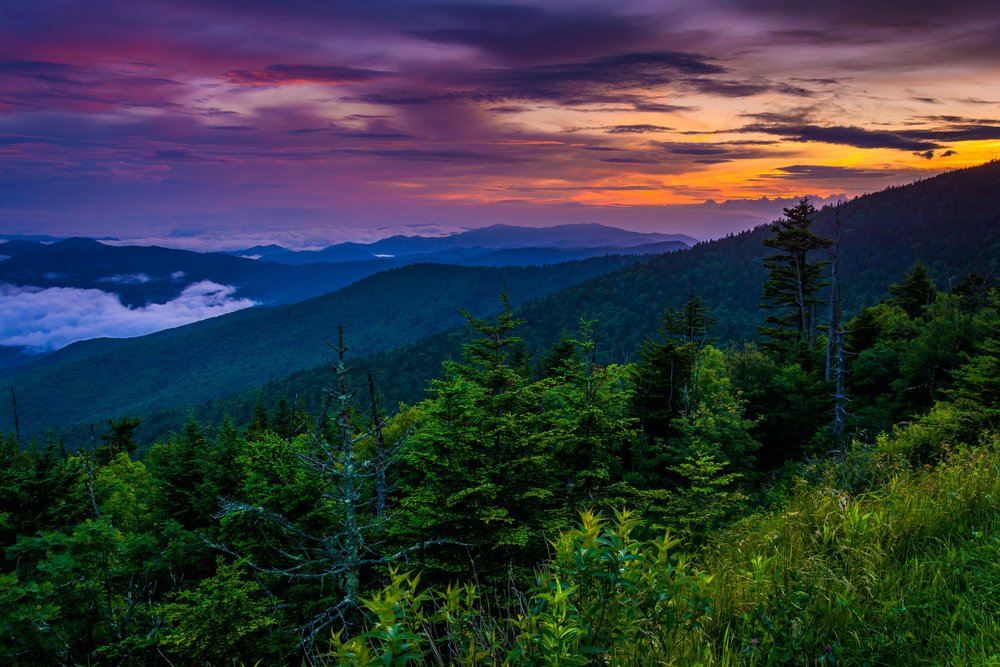Have you ever wondered what type of climate the Great Smoky Mountains have? The Great Smoky Mountains experience a temperate rainforest climate, with high humidity, ample rainfall, and four distinct seasons. Summers are warm and humid, while winters can be cold and snowy. The unique climate of the area contributes to the lush forests and diverse wildlife that call the Great Smoky Mountains home. So if you’re planning a trip to this beautiful region, make sure to pack accordingly for the ever-changing weather! What Type Of Climate Is The Great Smoky Mountains?
Have you ever wondered what type of climate the Great Smoky Mountains have? In this article, we will explore the climate of this iconic mountain range and provide you with all the information you need to know. So grab a cup of coffee, get cozy, and let’s dive into the fascinating world of the Great Smoky Mountains’ climate.

This image is property of www.smokymountainnavigator.com.
Seasonal Changes in the Great Smoky Mountains
The Great Smoky Mountains experience four distinct seasons: spring, summer, fall, and winter. Each season brings its own unique beauty to the mountains, making it a popular destination for outdoor enthusiasts all year round. From blooming wildflowers in the spring to vibrant foliage in the fall, there is always something new to see in the Great Smoky Mountains.
Summer in the Great Smoky Mountains
Summer in the Great Smoky Mountains is warm and humid, with average temperatures ranging from the mid-60s to the low 80s Fahrenheit. This is the peak tourist season, as visitors flock to the mountains to enjoy the lush greenery and abundant wildlife. The summer months also bring afternoon thunderstorms, so be prepared for sudden rain showers if you plan on hiking or camping in the area.
Fall Foliage in the Great Smoky Mountains
One of the most popular times to visit the Great Smoky Mountains is in the fall, when the landscape transforms into a stunning display of reds, oranges, and yellows. The peak foliage season typically occurs in late October to early November, attracting photographers and nature lovers from all over the world. If you’re planning a trip during this time, be sure to book your accommodations early, as hotels and cabins tend to fill up quickly during peak foliage season.
Winter Wonderland in the Great Smoky Mountains
Winter in the Great Smoky Mountains is a magical time, with snow-covered peaks and frost-covered trees creating a winter wonderland atmosphere. The temperatures in the winter months can drop below freezing, so be sure to pack warm clothing if you plan on visiting during this time. While some of the higher elevation roads may be closed due to snow and ice, there are still plenty of opportunities for outdoor activities such as skiing, snowshoeing, and winter hiking.
Average Temperatures in the Great Smoky Mountains
Here is a table showcasing the average temperatures in the Great Smoky Mountains throughout the year:
| Month | Average High Temperature (F) | Average Low Temperature (F) |
|---|---|---|
| January | 44 | 24 |
| February | 48 | 27 |
| March | 56 | 33 |
| April | 64 | 39 |
| May | 72 | 48 |
| June | 79 | 56 |
| July | 83 | 61 |
| August | 82 | 60 |
| September | 76 | 53 |
| October | 68 | 41 |
| November | 56 | 32 |
| December | 47 | 25 |
As you can see, the temperatures in the Great Smoky Mountains vary throughout the year, with the warmest months being June through August and the coldest months being December through February.

This image is property of www.nps.gov.
Rainfall in the Great Smoky Mountains
The Great Smoky Mountains receive a significant amount of rainfall throughout the year, with an average annual rainfall of around 55 inches. The wettest months are typically March through July, with thunderstorms bringing heavy downpours to the region. This rainfall is essential for the lush greenery and diverse ecosystems that thrive in the mountains, making it a haven for plant and animal species.
Average Monthly Rainfall in the Great Smoky Mountains
Here is a table showcasing the average monthly rainfall in the Great Smoky Mountains:
| Month | Average Monthly Rainfall (inches) |
|---|---|
| January | 4.3 |
| February | 4.3 |
| March | 5.0 |
| April | 4.2 |
| May | 4.5 |
| June | 4.5 |
| July | 5.2 |
| August | 4.2 |
| September | 3.7 |
| October | 2.7 |
| November | 4.2 |
| December | 4.5 |
The average monthly rainfall in the Great Smoky Mountains varies throughout the year, with the highest rainfall occurring in the spring and early summer months. Be sure to pack a rain jacket if you plan on visiting during these months, as sudden showers are common in the mountains.
Snowfall in the Great Smoky Mountains
While the Great Smoky Mountains don’t receive as much snowfall as other mountain ranges, they still experience snowy winters that add to the beauty of the landscape. The higher elevations in the mountains can receive several inches of snow during the winter months, creating a winter wonderland for visitors to explore. The snowfall adds a magical touch to the already stunning scenery, making it a popular time for outdoor activities such as skiing, snowshoeing, and snowmobiling.
Average Annual Snowfall in the Great Smoky Mountains
Here is a table showcasing the average annual snowfall in the Great Smoky Mountains:
| Elevation Range | Average Annual Snowfall (inches) |
|---|---|
| Below 2,500 feet | 5-10 |
| 2,500-4,000 feet | 15-35 |
| Above 4,000 feet | 50-85 |
As you can see, the higher elevations in the Great Smoky Mountains receive the most snowfall, creating a winter wonderland for visitors to explore. If you’re planning a winter trip to the mountains, be sure to check the weather conditions and road closures before heading out, as snow and ice can make travel hazardous in certain areas.

This image is property of weather-and-climate.com.
Microclimates in the Great Smoky Mountains
The Great Smoky Mountains are home to a variety of microclimates, each with its own unique characteristics and ecosystems. The variations in elevation, topography, and exposure to sunlight create a diverse range of climates within the park, allowing for a wide array of plant and animal species to thrive.
River Valleys and Bottomlands
The lower elevations of the Great Smoky Mountains, including river valleys and bottomlands, experience warmer temperatures and higher humidity levels than the higher elevations. These areas are characterized by lush forests, flowing rivers, and diverse plant and animal species that thrive in the warmer, wetter climate. If you’re looking to explore the rich biodiversity of the mountains, be sure to hike along the river valleys and bottomlands where you can spot a wide variety of flora and fauna.
Mountain Summits and High Elevations
The mountain summits and high elevations of the Great Smoky Mountains experience cooler temperatures and lower humidity levels than the lower elevations. These areas are home to unique ecosystems such as spruce-fir forests, subalpine meadows, and rocky outcrops that support a variety of plant and animal species adapted to the harsher climate. If you’re seeking solitude and breathtaking views, head to the mountain summits and high elevations for a truly unforgettable experience in the Great Smoky Mountains.
Conclusion
In conclusion, the Great Smoky Mountains experience a diverse climate that varies throughout the year, creating a rich tapestry of ecosystems and landscapes for visitors to explore. Whether you’re visiting in the spring to see the blooming wildflowers, in the fall to witness the vibrant foliage, or in the winter to experience the snowy wonderland, the Great Smoky Mountains offer something for everyone to enjoy. So pack your bags, lace up your hiking boots, and discover the beauty of this iconic mountain range for yourself.

This image is property of mountainmodernlodges.com.

